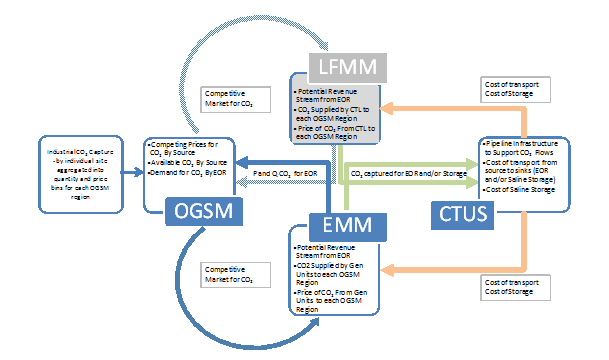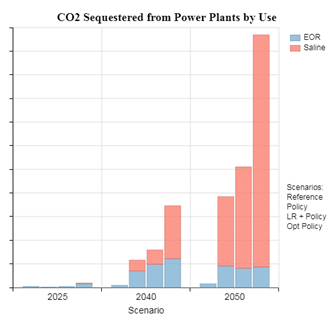
Tax Policy’s Potential Role in the Transition to a Low Carbon Future
Frances Wood recently presented results of an OnLocation analysis at the 35th Annual USAEE/IAEE North American Conference held in Houston Texas in November 2017. The United States Association for Energy Economics (USAEE) is the largest affiliate of the International Association for Energy Economics (IAEE), an organization that provides a forum for industry professionals to exchange ideas on a variety of issues and challenges facing the energy industry.
Ms. Wood’s presentation, titled “Examining a “No Regrets” Policy to Facilitate a Transition to a Lower Carbon Future,” focused on the potential impact of a tax policy combined with improved carbon capture and storage (CCS) technology at power plants to provide captured CO2 for use in enhanced oil recovery (EOR) under various market conditions.
The analysis was performed using a customized version of the National Energy Modeling System (NEMS) created by OnLocation[1] that includes a carbon capture, transport, utilization and storage (CTUS) module designed by OnLocation for use in the NEMS model. The CTUS module uses information about captured CO2 from the electricity model (EMM) and liquid fuels market model (LFMM), and EOR demand from the oil and gas supply model (OGSM), and uses this information to determine the best (least cost) pipeline configuration that can be used to transport CO2 to EOR and saline storage locations.

The analysis compares CCS deployment in the U.S. power sector and EOR potential in three main scenarios:
- A Tax Credit Policy Scenario that includes a tax credit of $35/ton for CO2 captured and used for EOR and a $50/ton credit for CO2 sequestered in geologic storage;
- A Low Oil and Natural Gas Resources Scenario combined with the tax credits for CO2 capture and sequestration;
- A Combined Optimistic Low Cost and Policy Scenario that assumes lower technology costs for CCS combined with the tax credits.
The scenarios are designed to determine the potential impact of three different factors that could play a role in the future of CCS technology in power plants: a tax subsidy that incentivizes captured CO2 for EOR and geologic storage, higher future domestic oil and natural gas prices that would make EOR more attractive, and lower CCS technology costs that would reduce the cost of captured CO2 from power plants.

The results were insightful:
1. In all three scenarios, CO2 sequestered from power plants increased compared to a reference case with less favorable market and policy conditions.
2. The impact of a tax credit for captured CO2 was magnified when paired with higher natural gas prices and optimistic CCS technology assumptions.
3. While the market for CO2 for use in EOR increased in the short run, captured CO2 was also economic in the long run when sent to saline geologic storage.
The presentation concludes that a tax credit for CO2 capture and sequestration can be an effective policy to facilitate a transition to a lower carbon future, especially under favorable market conditions and technology assumptions. This “no regrets” tax policy can also provide lower cost sources of CO2 to the enhanced oil recovery market, thus providing benefits beyond CO2 reduction.
[1] All underlying model assumptions were adopted from the EIA Annual Energy Outlook 2017 reference case.

